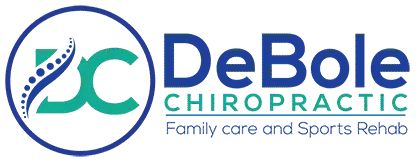
Your spine provides structure and support for the entire body. It’s composed of vertebrae, ligaments, discs, and nerves that connect to parts of the musculoskeletal system, helping you to sit, stand, bend, walk, and move around. When something in the spine is out of whack, these daily activities can feel very uncomfortable.
Spinal injuries and degeneration from aging or wear and tear can cause the vertebrae to compress or misalign, discs to bulge, and nerves to become impinged. Pressure and misalignment in the spine can lead to all kinds of neck, back, and nerve pain, discomfort, weakness, or even further spinal injury.
Spinal decompression therapy can be used to alleviate back pain and create space for discs newprovortho and vertebrae to realign.
What Does Spinal Decompression Do?
Spinal decompression is a method of treatment used to help your spine heal by relieving compression of the discs. Spinal decompression therapy typically refers to non-surgical decompression treatment where a practitioner creates negative intradiscal pressure (space within the disc) to alleviate pain and help stimulate healing and realignment in the spine.
This negative pressure can:
- Increase circulation of fluids and nutrients within the disc to help with rehydration and healing
- Alleviate pressure that may be causing pinched nerves, sciatica, bulging discs
- Create space for herniated or bulging discs to move back into alignment
Surgical spinal decompression treatment (such as laminectomy or discectomy) is typically reserved for severe cases of spinal injury or if other treatment is ineffective.
Non-surgical spinal decompression therapy, implemented by a chiropractor or osteopath, is a more common, noninvasive decompression method used to treat back and neck pain.
What is Non-Surgical Spinal Decompression?
Non-surgical spinal decompression is a mechanical traction process that gently stretches and relaxes the spine with the help of a traction table or other similar device. The patient is strapped to the table around the waist, and then supported with pillows or other props to keep the spine in proper alignment. The table then moves in increments to create a pull and release on the patient’s body which stretches and tractions the spine.
Decompression tables are operated using computerized programming that dictate the level and pattern of traction applied to the patient’s body. The program used will depend on the specific symptoms and diagnosis of each patient, as well as treatment history.
Some decompression tables also have sensors which monitor if muscles begin to resist traction, and adapt appropriately. This is a really important benefit of using a traction table as opposed to traditional manual traction therapy because muscle guarding can make the therapy less effective and cause additional pain.
When is Spinal Decompression Beneficial?
Most spinal injuries or back pain are related to compression of the spine. Spinal decompression may be beneficial to folks experiencing pain from injury or condition involving spinal compression.
Decompression therapy can be used to promote healing and relief for:
- Persistent back pain caused by compression of the spine
- Bulging discs
- Herniated discs
- Sciatica
- Pinched nerves
- Degenerative disc disease
- Spinal stenosis
- Injured spinal nerve roots
and more.
Spinal decompression treatments shouldn’t increase pain in the spine, but will create a sensation of stretching and lengthening in the back. In rare cases, however, spinal decompression therapy has been reported to cause muscle spasm or shooting pain down the arms or legs.
If pain does occur, most traction tables have stop switches for both the patient and the practitioner so the procedure can be halted immediately.
There are a few instances where non-surgical spinal decompression should be avoided.
If you are experiencing any of the following conditions, you should avoid spinal decompression therapy:
- Pregnancy
- Spinal fracture
- Severe osteoporosis
- Metal implants in the spine
- History of aortic aneurysm
- Tumor or metastatic cancer in the bones
- Severe spinal instability (i.e. severe osteoporosis or spinal degeneration)
Start Your Spinal Decompression Treatment
at DeBole Chiropractic
If you’re experiencing persistent back, neck, or nerve pain, sciatica, bulging or herniated discs, you may be a good candidate for non-surgical spinal decompression. At Debole Chiropractic, we address the cause of your pain, not just the symptoms.
With supportive care and quality decompression technology, our spinal decompression treatment plan targets specific vertebrae and uses the minimum pressure needed to help you heal as quickly and thoroughly as possible.
Typical treatment consists of multiple 30 minute sessions over the course of a few weeks, but patients have seen relief in as little as a week.
If you are suffering from back or neck pain, please get in touch with our chiropractic office and schedule an appointment. Give us a call at 585-433-5680 or fill out our online contact form today!

